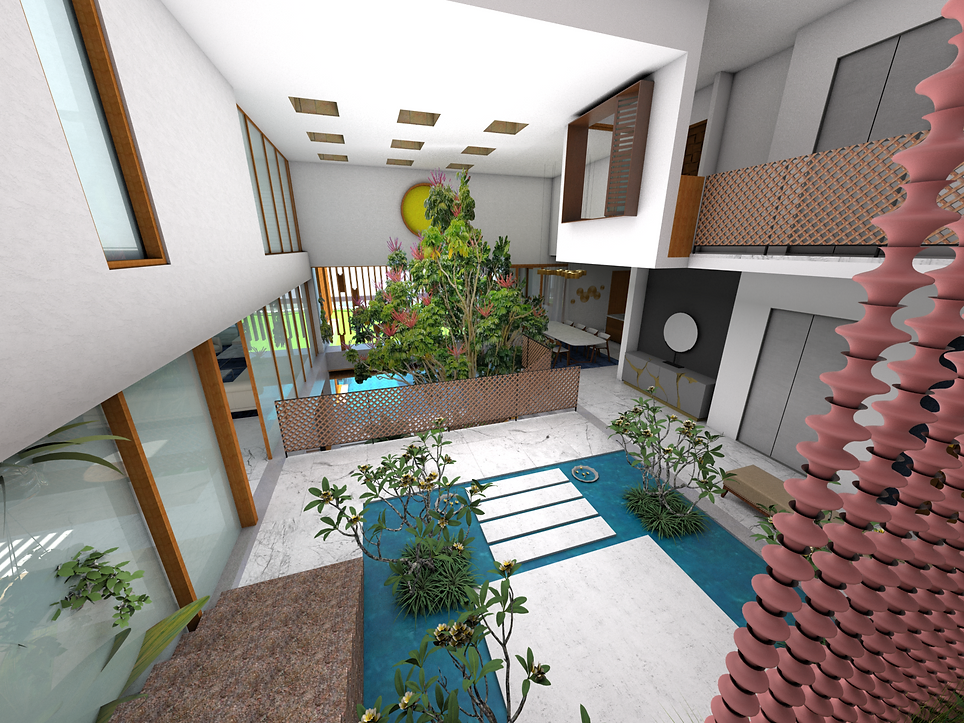Designing: The Art and Science of Enhancing Spaces
Interior designing is a multifaceted discipline that marries creativity with technical proficiency to enhance the functionality, safety, and aesthetics of interior spaces. It involves a comprehensive understanding of architecture, psychology, and design principles to create environments that are both beautiful and practical. Whether it’s a residential home, an office, or a commercial space, interior designing plays a crucial role in shaping the ambiance and experience of the occupants.
The Fundamentals of Interior Designing
At its core, interior designing involves several key elements: space, line, form, light, color, texture, and pattern. These elements work together to create a harmonious and aesthetically pleasing environment.
-
Space: Space is the foundation of any design. It refers to the physical boundaries of a room and the area within which the designer works. Effective use of space is crucial, whether it's through open-plan layouts, strategic furniture placement, or creating functional zones within a room.
-
Line: Lines give direction and form to a space. Horizontal lines can make a room appear wider and more expansive, while vertical lines add height and grandeur. Curved lines bring softness and fluidity, creating a more relaxed and dynamic feel.
-
Form: Form refers to the shape of the room and the objects within it. It can be geometric (sharp and angular) or natural (soft and organic). Balancing different forms within a space is key to achieving visual harmony.
-
Light: Lighting is a critical element in interior design, affecting both the functionality and mood of a space. Natural light enhances the sense of openness and connection to the outdoors, while artificial lighting can be used to highlight features, create ambiance, or provide task illumination.
-
Color: Color profoundly impacts mood and perception. Warm colors like red, yellow, and orange can make a space feel cozy and inviting, while cool colors like blue, green, and purple can create a calming and serene atmosphere. Neutral colors provide a versatile backdrop that can be easily accessorized.
-
Texture: Texture adds depth and interest to a design. It refers to the surface quality of materials, whether smooth, rough, soft, or hard. Combining different textures can create a richer, more layered look.
-
Pattern: Patterns bring movement and excitement to a space. They can be bold and eye-catching or subtle and understated. Patterns should be used thoughtfully to avoid overwhelming the design.
The Process of Interior Designing
The interior design process typically involves several stages:
-
Concept Development: This initial phase involves understanding the client's needs, preferences, and budget. Designers create mood boards, sketches, and concept presentations to convey their vision.
-
Space Planning: Effective space planning ensures that the layout is functional and maximizes the available space. This stage involves creating floor plans and furniture arrangements.
-
Design Development: During this phase, the designer refines the concept, selecting materials, finishes, and furnishings. Detailed drawings and specifications are prepared.
-
Execution: This stage involves the actual implementation of the design. It includes coordinating with contractors, overseeing the construction or renovation process, and ensuring that the project stays on schedule and within budget.
-
Styling and Finishing: The final stage involves adding the finishing touches, such as accessories, artwork, and decor items. This step personalizes the space and brings the design to life.
Trends and Innovations in Interior Designing
Interior design is constantly evolving, influenced by cultural shifts, technological advancements, and environmental concerns. Some current trends and innovations include:
-
Sustainability: Eco-friendly design is gaining prominence, with a focus on using sustainable materials, energy-efficient lighting, and reducing waste. Biophilic design, which incorporates natural elements like plants and water features, is also popular.
-
Smart Homes: Technology is transforming interior design with smart home systems that control lighting, temperature, and security. These systems enhance convenience and efficiency.
-
Minimalism: The minimalist approach emphasizes simplicity and functionality, with clean lines, neutral colors, and uncluttered spaces. This trend reflects a desire for a more serene and stress-free environment.
-
Maximalism: In contrast, maximalism celebrates bold colors, eclectic patterns, and a mix of textures and styles. It’s a way to express individuality and creativity.
-
Multifunctional Spaces: With the rise of remote work and smaller living spaces, there’s a growing demand for multifunctional furniture and flexible layouts that adapt to different needs.
-
Cultural Influences: Globalization has brought diverse cultural influences into interior design, resulting in unique blends of styles, materials, and motifs from around the world.
The Impact of Interior Designing
Good interior design goes beyond aesthetics; it improves quality of life. Thoughtfully designed spaces can enhance productivity, promote relaxation, and foster social interaction. In commercial settings, interior design can influence customer behavior, brand perception, and employee satisfaction.
In conclusion, interior designing is a dynamic and impactful discipline that combines art and science to create environments that enrich our daily lives. It requires a deep understanding of design principles, a keen eye for detail, and a passion for transforming spaces into functional and beautiful places. Whether it's a cozy home, a bustling office, or a luxurious hotel, interior design plays a vital role in shaping our experiences and emotions.
